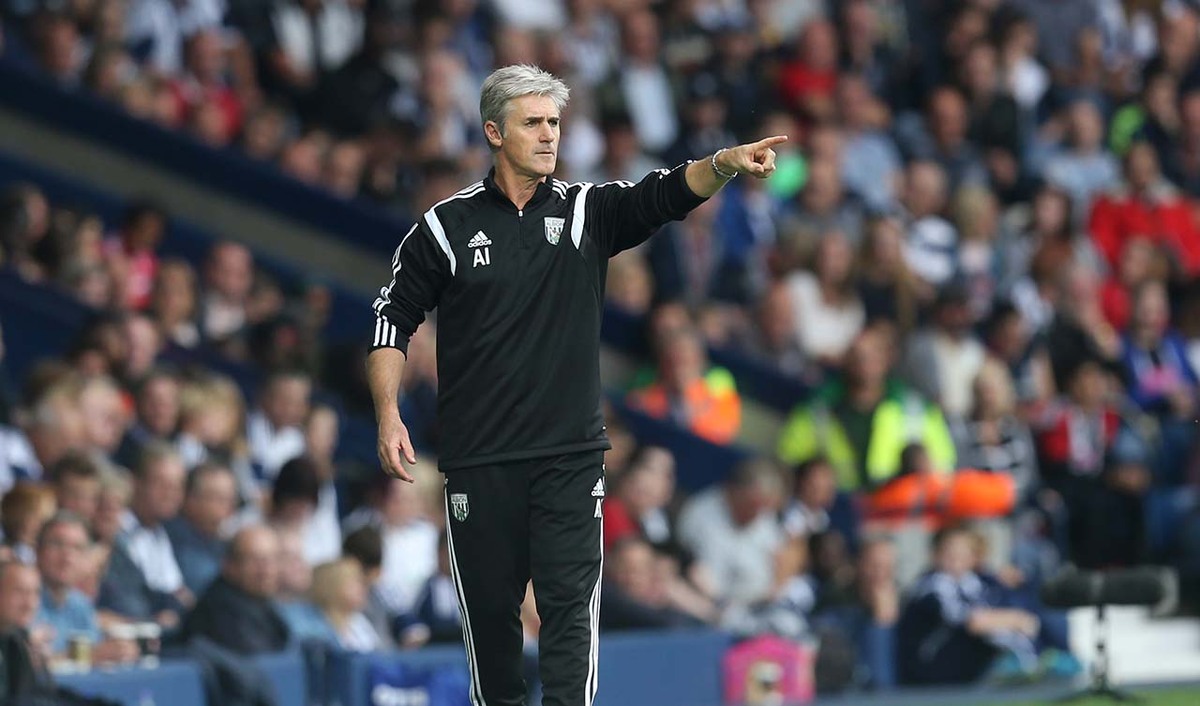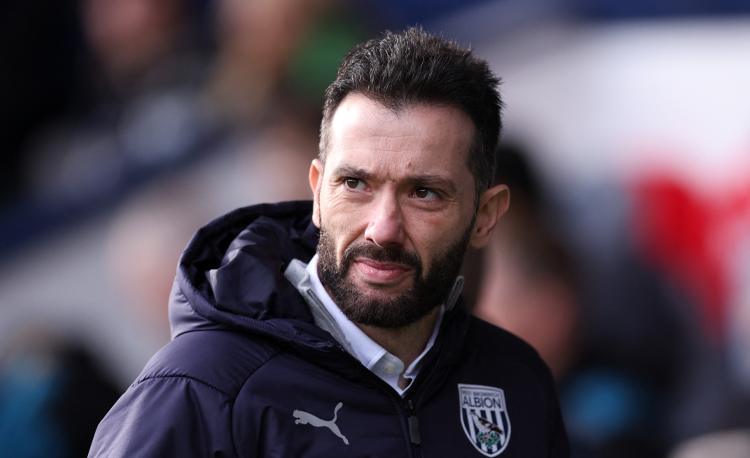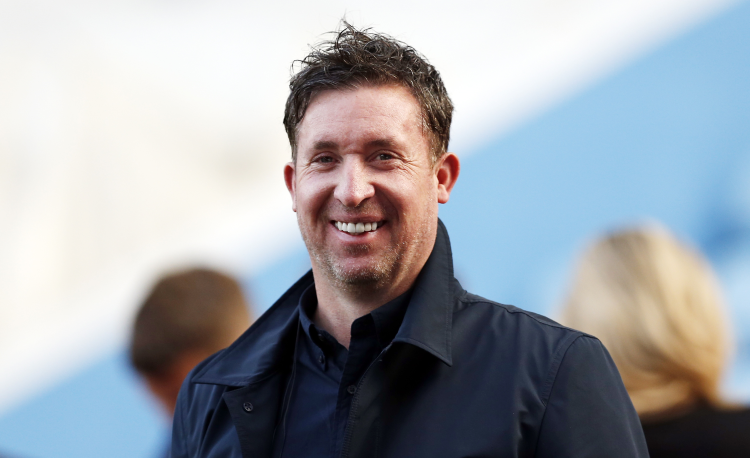You are viewing 1 of your 1 free articles
Blind side runs
| Area | Up to half pitch |
| Equipment | Balls, mannequins, goal |
| No. of Players | Up to 16 |
| Session Time |
Practice 1 20mins, Practices 2 & 3 40mins, total Game 20mins |
This session is about developing blind side runs in the final third in order to break the last line of defence. It’s important to practise this because goals are scored at the highest level as a result of blind side runs.
In this session, the first practice was designed to recreate the goal scored by Fabio Quagliarella of Juventus, in the Champions League match against Chelsea at Stamford Bridge on September 19, 2012.
I use mannequins for each position of the passing drill, but markers will suffice. The size of the area used can be adapted to suit the standard and age of players. The drill can be used for up to 16 players without any having to queue for long periods as long as a high tempo is maintained – this is one of our key demands for players.
What do I get the players to do?
Practice 1
In a 50x30-yard area, and set up as shown, this practice involves two balls being worked at the same time. All players follow their passes, with the ball initially being moved to the right and advanced into the area towards the mannequins (1a). Central attackers, positioned near the mannequins, make blind side runs in behind the mannequin being attacked by the player on the ball, timed to receive a short pass (1b).
1a
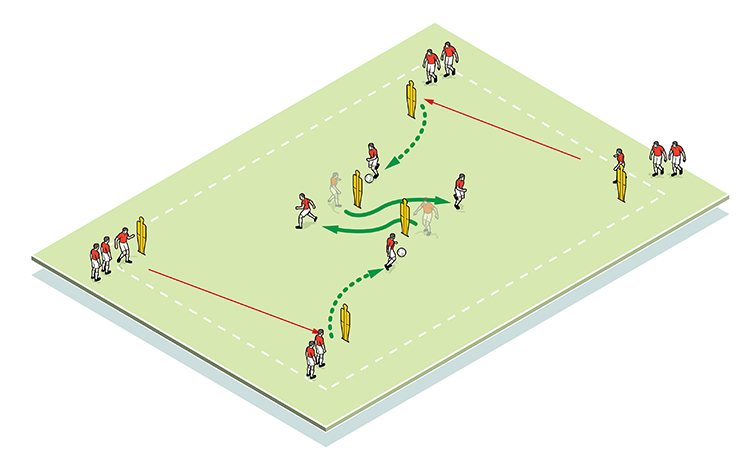
1b
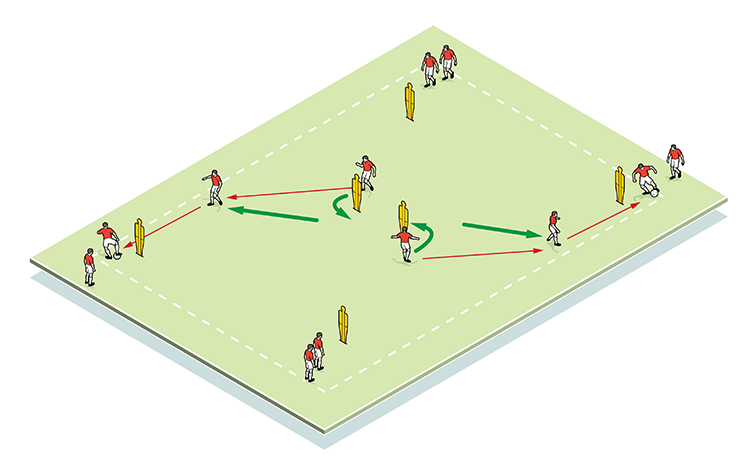
The receiver runs onto the pass. In a game, because the nearest centre-back is watching the inrushing winger, the first time he sees the striker’s blind side run is when the ball is played past him, by which time it’s too late to react. Work the practice on both sides.
Practice 2
We now move onto a half pitch. This is unopposed, with the blind side run coming from one of the players positioned on the mannequins immediately in front of the penalty box. The receiver then takes the ball into the box and shoots at goal (2). Again, each player follows his pass, and we alternate sides for each additional move.
2

2. The attacker makes a blind side run to receive, moving forward into the box and firing a shot at goal
Practice 3
We now introduce live defenders and remove the mannequins, and allow the player who passes into the front two to join the attack in a 3v2 (3a/3b). Players now have decisions to make.
3a
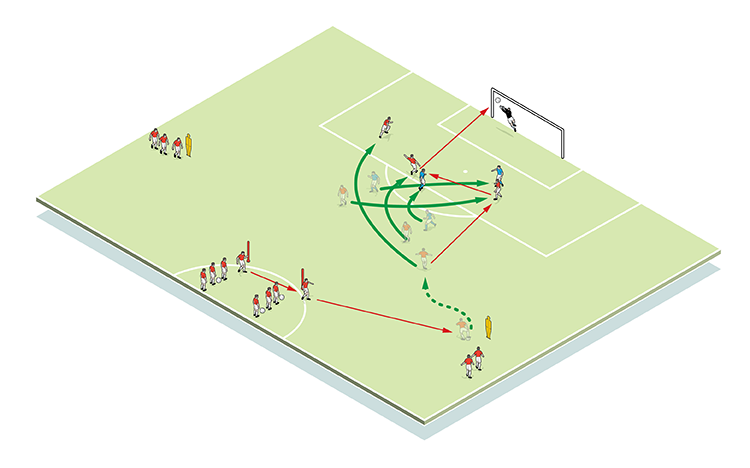
3b

What are the key things to look out for?
A high tempo is required throughout, with players making clever runs, with good angles of play, timing, decision-making and weight of pass, as well as providing a clinical finish.
How do I put this into a game situation?
Play on a narrowed half-pitch. Narrowing the pitch ensures players are less able to cross from wide, so encouraging blind side run situations. We can also promote these by encouraging full-backs to show inside whenever possible.
Related Files
Editor's Picks
Using the goalkeeper in build-up play
Pressing principles
Intensive boxes drill with goals
Penetrating the final third
Creating and finishing
My philosophy
Pressing initiation
Compact team movement
Defensive organisation
Coaches' Testimonials

Alan Pardew

Arsène Wenger

Brendan Rodgers

Carlos Carvalhal

José Mourinho

Jürgen Klopp

Pep Guardiola

Roy Hodgson

Sir Alex Ferguson

Steven Gerrard
Related
Shooting and movement
Rousing, responsive and resilient
Third-player runs
Coaches' Testimonials

Gerald Kearney, Downtown Las Vegas Soccer Club

Paul Butler, Florida, USA

Rick Shields, Springboro, USA

Tony Green, Pierrefonds Titans, Quebec, Canada
Join the world's leading coaches and managers and discover for yourself one of the best kept secrets in coaching. No other training tool on the planet is written or read by the calibre of names you’ll find in Elite Soccer.
In a recent survey 92% of subscribers said Elite Soccer makes them more confident, 89% said it makes them a more effective coach and 91% said it makes them more inspired.
Get Monthly Inspiration
All the latest techniques and approaches
Since 2010 Elite Soccer has given subscribers exclusive insight into the training ground practices of the world’s best coaches. Published in partnership with the League Managers Association we have unparalleled access to the leading lights in the English leagues, as well as a host of international managers.
Elite Soccer exclusively features sessions written by the coaches themselves. There are no observed sessions and no sessions “in the style of”, just first-hand advice delivered direct to you from the coach.
